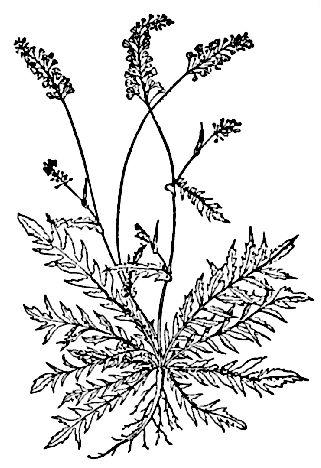[1] British Herbal Pharmacopoeia 1983 Published by the British Herbal Medicine
Association ISBN 0 903032 07 4.
[2] Herbal Materia Medica Course Notes For Diploma of Naturopathy and Diploma
of Herbalism Students by Lydia Mottram.
[3] Potter's New Cyclopaedia of Botanical Drugs and Preparations R.C. Wren
Revised by Elizabeth M. Williamson and Fred J Evans. First published in Great
Britain in 1988 and reprinted in 1989 and 1994 by the C. W. Daniel Company Limited.
1 Church Path, Saffron Walden Essex. Published 1988 Printed and bound by Biddles,
Guildford ISBN 085207 1973.
Images
1.
en.wikipedia.org
by Dysmorodrepanis CC BY-SA 2.5
Flavonoids; luteolin-7-rutenoside and quercetin-3-rutinoside.[1]
Diosmin.
Polypeptites.[2] Acids; fumaric and
bursic acids.[3]
Bases; choline, acetycholine, histamine, tyramine.[3,4]
Alcohol-amines.
Alkaloid- Bursine.
Resin 6%. Saponins. Tannin.
Volatile oil containing sulphur compounds.
References
[1] Farkas, L. in Pharmacognosy and Phytochemistry 1st Int. Cong. Munich 1971.
Pub. Springer-Verlag (1971)
[2] Kuroda, K. and Tagaki, K. (1968) Nature 220, 707
[3] Kuroda, K and Kaku, T. (1969) Life Sci. 8(1), 151
[4] Hill, R. K. in The Alkaloids vol. 2, Ed S.W. Pelletier, Pub. John Wiley
(1984)
 Research.
Research.